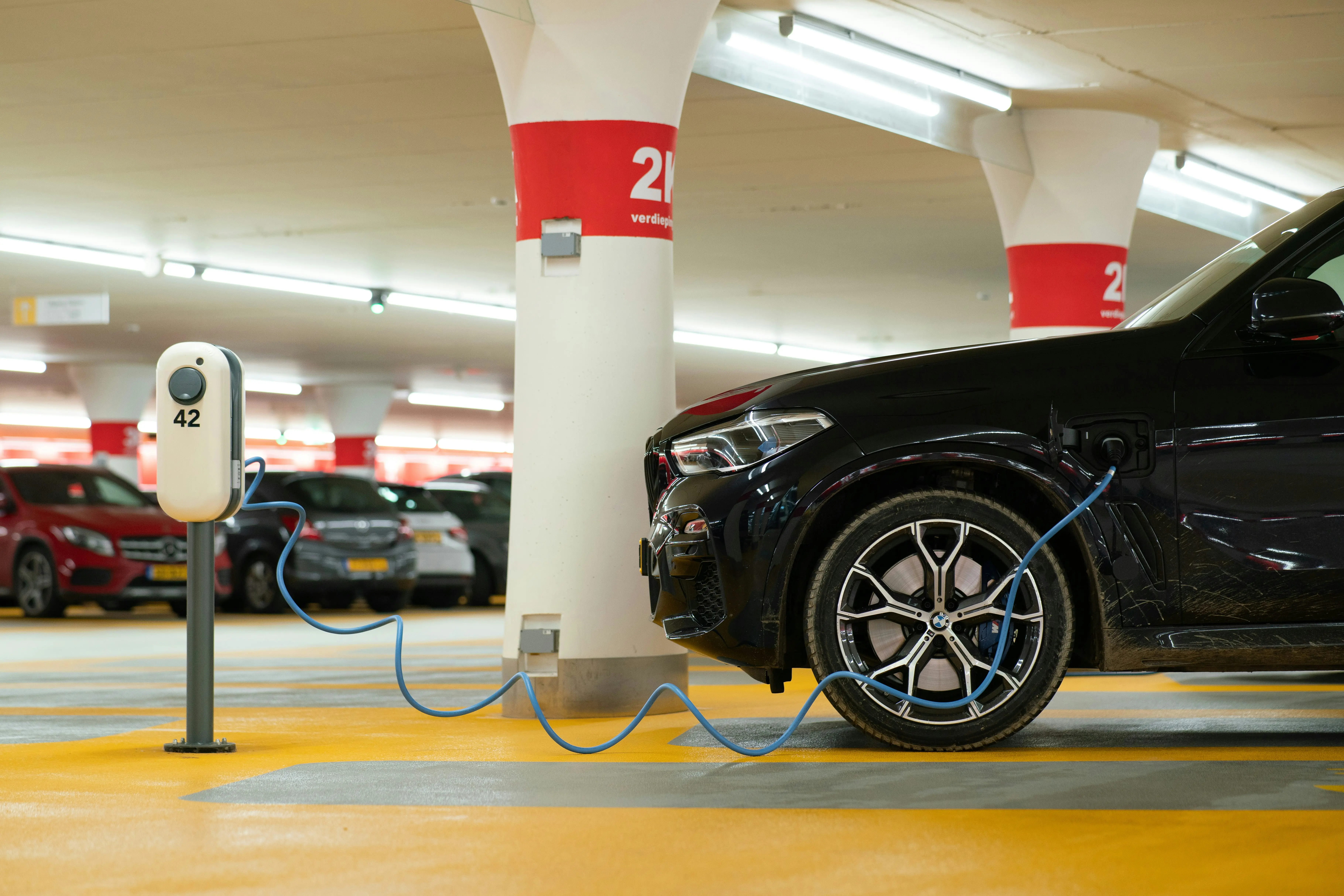
Electric vehicles (EVs) are often hailed as a key solution to combat climate change due to their potential to reduce greenhouse gas emissions and get us closer to our net zero emissions climate goals. While EVs offer benefits, they are not a panacea for addressing the challenges of climate change mitigation. From inequities in access to environmental impacts on the Global South, several factors contribute to the limitations of EVs in achieving sustainable climate solutions.
Electric Vehicles Still Pollute
While EVs are hailed as zero-emission vehicles, they still emit non-exhaust particulate matter from tires and brakes. They emit non-exhaust particulate matter at a greater rate than combustion-engine vehicles because they are heavier—24% heavier on average. Tire particulate matter includes microplastics, volatile organic compounds, and other chemical additives that pollute the air, soil, and surrounding waterways.
Urgent Need to Decarbonize
The fastest track to decarbonization is the one paired with active transportation. Switching to EVs with no other change in the status quo is not a sufficient solution to addressing the urgency of climate change. It leaves us decades away from decarbonization. However, pairing EVs with active transportation is one of the best, most sustainable ways of reducing carbon emissions.
Given the urgency of moving to a ‘net zero’ carbon emissions economy, there is growing consensus that technological substitution via electrification will not be sufficient or fast enough to transform the transport system.
(Creutzig et al., 2018, IPCC, 2018)
Access Inequity
Despite some of the benefits, EVs often exacerbate existing inequities, particularly in access to sustainable transportation solutions. EVs come with a higher upfront cost than traditional vehicles, making them less accessible to lower-income individuals and families. Without intentional policy intervention, more than half of the lowest-income U.S. households would continue to experience high transportation energy burdens, defined as spending more than 4% of their household income to fill their tank or charge up.
Building a comprehensive charging network is another concern. Rural and low-income communities face disparities in access to adequate charging stations and infrastructure. There is a coinciding factor when looking at maps of “charging deserts” and where predominantly low-income minority folks live. Many homeowners rely on home charging stations for convenient and cost-effective charging. For moderate-to-low-income people living in apartments and affordable housing, installing home charging stations is expensive and sometimes impossible. Rural communities and regions with limited public transportation may lack the necessary EV infrastructure, creating barriers that impede the adoption of EVs.
Environmental and Social Impact of Mining
The production of EV batteries relies on extracting key materials such as lithium, cobalt, nickel, and graphite. These resources are being mined from places such as the Democratic Republic of Congo (DCR), the Philippines, and Brazil. Mining activities can disproportionately impact indigenous and local communities, often living in or near mining regions. They face displacement, loss of access to land and resources, and health issues due to environmental pollution.
Lithium extraction can lead to water scarcity and contamination, affecting local ecosystems and agricultural activities. Indigenous communities, like those in Chile’s Atacama Desert, have raised concerns about the depletion of water resources, pollution, and the land grabs for lithium mining.
End of Lifecycle
Recycling EV batteries can be challenging and has not yet been widely implemented, leading to concerns about disposal and environmental damage. Proper disposal of EV components, especially batteries, is crucial to prevent environmental harm. Without effective recycling and disposal systems, the environmental benefits of EVs diminish.
Promoting public transit, biking, and walking can be more effective in reducing emissions and congestion in cities than solely relying on individual EVs. We need massive investment in public transportation infrastructure that serves the needs of those who cannot spend thousands of dollars on an EV. Investment in inclusive and affordable public transportation will help mitigate air pollution and fight climate change impacts.
Learn more about Twin Cities Boulevard.
A better future is possible.